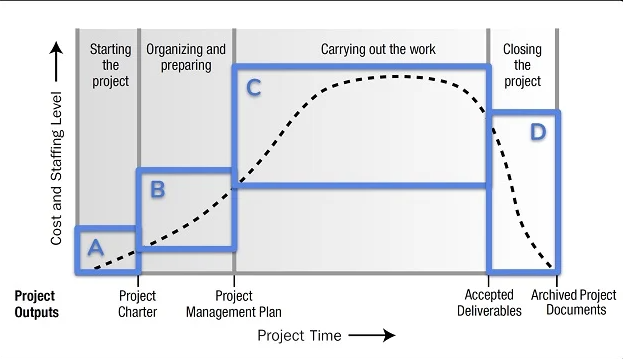Any client can send an unsolicited ARP Reply called a “gratuitous ARP.” This is often done when a device first boots up to inform all other devices on the local network of the new device’s MAC address. When a host sends a gratuitous ARP, other hosts on the subnet store the MAC address and IP address contained in the gratuitous ARP in their ARP tables.
However, this feature of ARP also means that any host can claim to be the owner of any IP/MAC they choose. A threat actor can poison the ARP cache of devices on the local network, creating a MiTM attack to redirect traffic. The goal is to associate the threat actor’s MAC address with the IP address of the default gateway in the ARP caches of hosts on the LAN segment. This positions the threat actor in between the victim and all other systems outside of the local subnet.
ARP Cache Poisoning
DNS Attacks
DNS attacks include the following:
- DNS open resolver attacks
- DNS stealth attacks
- DNS domain shadowing attacks
- DNS tunnelling attacks
DNS Open Resolver Attacks
Many organizations use the services of publicly open DNS servers such as GoogleDNS (8.8.8.8) to provide responses to queries. This type of DNS server is called an open resolver. A DNS open resolver answers query from clients outside of its administrative domain. DNS open resolvers are vulnerable to multiple malicious activities described in the table.
| DNS Resolver Vulnerabilities | Description |
|---|---|
| DNS cache poisoning attacks | Threat actors send spoofed, falsified record resource (RR) information to a DNS resolver to redirect users from legitimate sites to malicious sites. DNS cache poisoning attacks can all be used to inform the DNS resolver to use a malicious name server that is providing RR information for malicious activities. |
| DNS amplification and reflection attacks | Threat actors use DoS or DDoS attacks on DNS open resolvers to increase the volume of attacks and to hide the true source of an attack. Threat actors send DNS messages to the open resolvers using the IP address of a target host. These attacks are possible because the open resolver will respond to queries from anyone asking a question. |
| DNS resource utilization attacks | A DoS attack that consumes the resources of the DNS open resolvers. This DoS attack consumes all the available resources to negatively affect the operations of the DNS open resolver. The impact of this DoS attack may require the DNS open resolver to be rebooted or services to be stopped and restarted. |
To hide their identity, threat actors also use the DNS stealth techniques described in the table to carry out their attacks.
| DNS Stealth Techniques | Description |
|---|---|
| Fast Flux | Threat actors use this technique to hide their phishing and malware delivery sites behind a quickly-changing network of compromised DNS hosts. The DNS IP addresses are continuously changed within minutes. Botnets often employ Fast Flux techniques to effectively hide malicious servers from being detected. |
| Double IP Flux | Threat actors use this technique to rapidly change the hostname to IP address mappings and to also change the authoritative name server. This increases the difficulty of identifying the source of the attack. |
| Domain Generation Algorithms | Threat actors use this technique in malware to randomly generate domain names that can then be used as rendezvous points to their command and control (C&C) servers. |
Domain shadowing involves the threat actor gathering domain account credentials in order to silently create multiple sub-domains to be used during the attacks. These subdomains typically point to malicious servers without alerting the actual owner of the parent domain.
DNS Tunneling
Threat actors who use DNS tunnelling place non-DNS traffic within DNS traffic. This method often circumvents security solutions. For the threat actor to use DNS tunnelling, the different types of DNS records such as TXT, MX, SRV, NULL, A, or CNAME are altered. For example, a TXT record can store the commands that are sent to the infected host bots as DNS replies. A DNS tunnelling attack using TXT works like this:
- The data is split into multiple encoded chunks.
- Each chunk is placed into a lower level domain name label of the DNS query.
- Because there is no response from the local or networked DNS for the query, the request is sent to the ISP’s recursive DNS servers.
- The recursive DNS service will forward the query to the attacker’s authoritative name server.
- The process is repeated until all of the queries containing the chunks are sent.
- When the attacker’s authoritative name server receives the DNS queries from the infected devices, it sends responses for each DNS query, which contains the encapsulated, encoded commands.
- The malware on the compromised host recombines the chunks and executes the commands hidden within.
To be able to stop DNS tunnelling, a filter that inspects DNS traffic must be used. Pay particular attention to DNS queries that are longer than average, or those that have a suspicious domain name. Also, DNS security solutions, such as Cisco Umbrella (formerly Cisco OpenDNS), block much of the DNS tunnelling traffic by identifying suspicious domains. Domains associated with Dynamic DNS services should be considered highly suspect.
DHCP
DHCP Attacks
A DHCP spoofing attack occurs when a rogue DHCP server is connected to the network and provides false IP configuration parameters to legitimate clients. A rogue server can provide a variety of misleading information:
- Wrong default gateway – The threat actor provides an invalid gateway, or the IP address of its host to create a MiTM attack. This may go entirely undetected as the intruder intercepts the data flow through the network.
- Wrong DNS server – A threat actor provides an incorrect DNS server address pointing the user to a malicious website.
- Wrong IP address – The threat actor provides an invalid IP address, invalid default gateway IP address, or both. The threat actor then creates a DoS attack on the DHCP client.
Assume a threat actor has successfully connected a rogue DHCP server to a switch port on the same subnet as the target clients. The goal of the rogue server is to provide clients with false IP configuration information.
Action Point
PS: If you would like to have an online course on any of the courses that you found on this blog, I will be glad to do that on an individual and corporate level, I will be very glad to do that I have trained several individuals and groups and they are doing well in their various fields of endeavour. Some of those that I have trained includes staffs of Dangote Refinery, FCMB, Zenith Bank, New Horizons Nigeria among others. Please come on Whatsapp and let’s talk about your training. You can reach me on Whatsapp HERE. Please note that I will be using Microsoft Team to facilitate the training.
I know you might agree with some of the points that I have raised in this article. You might not agree with some of the issues raised. Let me know your views about the topic discussed. We will appreciate it if you can drop your comment. Thanks in anticipation.
Fact Check Policy
CRMNAIJA is committed to fact-checking in a fair, transparent and non-partisan manner. Therefore, if you’ve found an error in any of our reports, be it factual, editorial, or an outdated post, please contact us to tell us about it.
|








